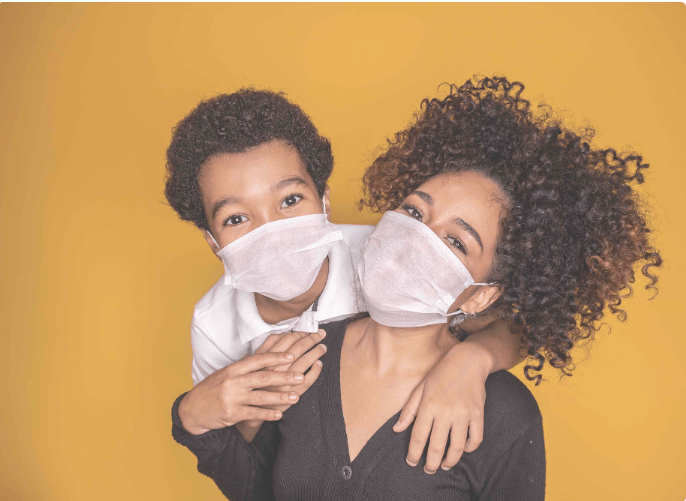Establishing a Health and Safety Protocol in Your Learning Pod
When creating a learning pod, it is critical to agree upon a health & safety protocol for all parties involved: the teacher, children, and families.

When creating a learning pod, one critical aspect is to agree upon a health and safety protocol for all parties involved: the teacher, children, and families.
What we are learning about COVID-19 continues to evolve, but in general, according to Dr. Emily Landon, a hospital epidemiologist and infectious diseases specialist at University of Chicago Medicine:
- Always choose outdoors over indoor
- Always choose masking over not masking
- Always choose more space for fewer people over a smaller space
Differences in Opinion
The goal is not to come to consensus or agreement quickly. The goal is to establish open lines of communication and trust. Shame and judgment are powerful feelings and rather than convincing others that your opinion is the correct one, it’s more important to listen to others’ opinions, reasons underlying any differences, and have an open discussion. If you don’t align, you don’t align. It’s far more important to communicate, not convince or immediately set on changing behavior. It’s also important to note that if your family remains more strict than others around you, you have every right to uphold your own boundaries.
Discussion about Households’ Social Distancing Behaviors
The following prompts are meant to provide transparency among families around their social distancing behaviors. As a group, you should discuss the following questions:
- What is each household’s COVID risk tolerance level (as defined below)?
- How many families does each household socialize with?
- Has anyone in any of the households recovered from COVID-19?
- Do any of the households have members that are immuno-compromised or aged 70+?
- Will anyone in the households be traveling to areas highly impacted by COVID-19?
COVID Risk Tolerance Levels (by Dr. Evelin Dacker)
We highly recommend reviewing Dr. Evelin Dacker’s COVID Care guide for a much more thorough discussion of the following tolerance levels, general health and COVID safety etiquette, and strategies to define your social circle and communicate social protocols.
0: Very Strict
- Stays exclusively within container/household
- Maintains 6 feet distance
- Strict infection control protocol
- No in-person contact with outside world
1: Strict
- Leaves container/household for essentials
- Maintains 6 feet distance outside container when leaves for essentials
- Strict etiquette, including handwashing, masks, and social distancing, used 100% of the time when outside container
- No socializing outside of container
2: Fairly Strict
- Leaves house only to go to work and for essentials
- Fairly strict etiquette, including handwashing, masks, and social distancing, used 80-99% of the time when outside container
- Minimizes grocery and other shopping
- Socializes with others outside container
3: Somewhat Open
- Leaves the container to exercise, go to the store, work, and other activities several times a week.
- Etiquette, including hand washing, masks and social distancing, used 60-79% of the time when outside of the container.
- Sometimes socializes with others who are not in one’s container
- Tries to maintain social distancing with no more than 10 people
4: Moderately Open
- Leaves the container to exercise, go to the store, work, and other activities multiple times a week.
- Etiquette, including hand washing, masks and social distancing, used 40–59% of the time when outside of the container.
- Regularly socializes others who are not in one’s container
- May not maintain social distance and see more than 10 people
5: Very Open
- No precautions to protect self from infection
- May desire to get infected
- Regularly socializes without regard to social distancing or recommended etiquette
After Households Agree on Health and Safety Guidelines
After you’ve gathered responses from other households and come to consensus on your pod’s norms of etiquette and social behavior, we recommend revisiting these protocols regularly. As advice and guidelines around COVID change, many people’s personal and household protocols change, too. The primary goal is to remain in constant communication as time passes and new situations arise that you may not have anticipated.
Discussion with Your Teacher
With your learning pod teacher, you should be prepared to answer the following questions or proactively address them:
- Are the children subject to the same mask or social etiquette as the teacher? For example, if the teacher is required to wear a mask at all times, are the children as well?
- Are the premises cleaned regularly? Will children be encouraged and asked to wipe down surfaces such as door handles after use?
- If multiple households are involved in the learning pod, will the location of the learning environment rotate among the households?
- Where is the learning environment in the house? Can or will lessons occur outside, weather permitting?
- Will sharing of equipment and learning materials be prohibited between students?
- Will the household offer single use paper towels as opposed to shared towels?
- Will there be temperature checks every morning?
Risk Mitigation, not Elimination
Remember that a learning pod serves more purposes than just health and safety, including: academic development, socialization, engagement, parent/guardian support, and cost-sharing. From a health and safety perspective, creating or joining a learning pod is about mitigating COVID-19 risk, not eliminating it. The tradeoff, of course, are the additional benefits related to your child(ren)’s experience in a learning pod.
We are happy to support you in learning more about and creating your own pods, including finding right-fit teachers matched to your needs to lead them.
Credit to our good friends at Hudson Labs School and their learning pods program. They inspired us with a template on how to establish health and safety protocols and we've expanded upon it in this article.
